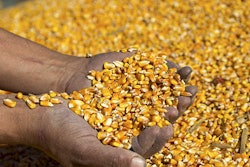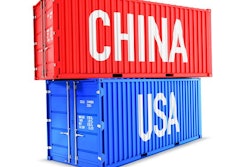
As part of the Phase 1 Economic And Trade Agreement between the U.S. and China, the Chinese agreed to purchase no less than $12.5 billion in U.S. agricultural products during calendar year 2020 and no less than $19.5 billion worth of U.S. farm and ranch goods in calendar year 2021, on top of a 2017 baseline amount anecdotally expected to be $24 billion. The baseline is to be applied to both years.
Combined, during the first two years China was expected to make agricultural purchases totaling $80 billion and additional purchases across manufacturing, energy and services of $120 billion (China: What Does it Mean Now?). The trajectory of these purchases was expected to continue through 2025.

China and the U.S. also made progress on a regionalization agreement related to animal diseases, acceptance of commonly used beef hormones and expanded market access into China for U.S. beef (USDA and USTR Announce Continued Progress on Implementation of U.S.-China Phase One Agreement). Reducing these non-tariff barriers are important not only to facilitate the Phase 1 purchase commitments of $80 billion but also to ensure U.S. agriculture has more fair and meaningful access to the Chinese market in the years and decades to come.
Shortly after implementation of the Phase 1 agreement, USDA’s Economic Research Service forecast U.S. exports to China at $14 billion for fiscal year 2020. At that time, ERS had only three months of trade data to China to formulate their forecast and the forecast was also tempered by significant uncertainties related to COVID-19. As a result, there are effectively two U.S. export goals: $14 billion in fiscal year 2020 (October 2019 to September 2020) and $36.5 billion – including insurance and freight -- for calendar year 2020. Using actual export data through March 2020 and historical export data, today’s article evaluates our export pace to China with respect to both of these targets.
Evaluating the Fiscal Year Goal
ERS’s forecast for $14 billion in exports during fiscal year 2020 is evaluated against USDA - Foreign Agricultural Service’s Global Agricultural Trade System’s agricultural-related exports – excluding forestry, aquaculture, insurance and freight. Prior to the trade war, approximately 74% of U.S. exports to China occurred from October to March, and 26% occurred from April through September.
Through the first six months of fiscal year 2020, U.S. agricultural exports to China totaled $8 billion, $3.9 billion, or 97%, above prior-year levels, but more than 50% below levels prior to the retaliatory tariffs imposed on U.S. agricultural products by China, i.e., $16 billion year-to-date in fiscal year 2017.
Assuming 74% of exports to China generally occur during this time period, the export value of $7.9 billion implies a fiscal year total of $10.8 billion – approximately $3.2 billion below USDA’s forecast of $14 billion.
For U.S. agricultural exports to China to meet the forecast of $14 billion, U.S. exports need to accelerate by 114% each month over historical trends through the rest of the fiscal year. Figure 2 highlights actual exports to China, the expected exports based on historical trends and the needed exports to meet USDA’s projection of $14 billion.

Evaluating the Calendar Year Goal
The Phase 1 target of $36.5 billion is evaluated against FAS’s Global Agricultural Trade System’s total exports including aquaculture but excluding forestry. For this exercise, the $36.5 billion is discounted by 15% to account for insurance and freight, resulting in a target of slightly more than $31 billion in exports during calendar year 2020. To align the fiscal year and calendar year values, the USDA forecast of $14 billion in exports to China was adjusted to account for the current pace of aquaculture products exported to China, i.e., approximately $500 million. These adjustments imply a fiscal year target of $14.5 billion and a calendar year total of more than $31 billion.
Through the first quarter, U.S. agricultural exports to China totaled $3.1 billion, slightly higher than prior-year levels. (Note: the Chinese reported first-quarter imports of $5 billion.) The remaining export value needed to meet the Phase 1 goal of $36.5 billion (minus insurance and freight) is nearly $28 billion. Given that approximately 30% of calendar year exports to China occur in the first quarter, the current export pace implies a calendar year total of $10.7 billion – $20 billion short of the Phase 1 goal.
Assuming exports accelerate following soybean harvest and USDA’s forecast holds, the U.S. will need to export nearly $22 billion in the fourth quarter of 2020 to achieve the lofty Phase 1 goal. Figure 3 highlights actual exports to China, the expected exports based on historical trends and the needed exports to meet the Phase 1 commitment.

Acceleration of Purchases Needed
Agricultural exports to China in fiscal year 2020 currently total $8 billion and year-to-date 2020 exports total $3.1 billion –- both well below the pace needed to meet USDA’s current projection and the Phase 1 commitments. In the case of the Phase 1 commitments, approximately $28 billion in U.S. agricultural exports are needed – after accounting for insurance and freight.
A portion of the slower pace of exports is attributable to COVID-19 demand destruction. However, China has yet to request article 7.6 consultation – the act of God clause -- which allows implementation to be delayed in the event of a natural disaster or other unforeseeable events outside the control of the parties, e.g., the coronavirus. Moreover, another factor worth monitoring is the slowdown in meat processing in the U.S. and the potential impact on exportable supplies, i.e., Pandemic Disrupts Processing Capacity, Drives Slaughter Numbers Down.
While China is currently short of their purchase commitments, China and the U.S. have made progress on non-tariff barriers, which will pave the way for China to accelerate purchases to meet their Phase 1 goal and improve U.S. agriculture’s long-term competitive position in the Chinese market. The use of strategic reserves and/or economic recovery in a post-COVID environment will also boost China’s ability to meet its purchase commitments.
From now through the end of 2020, farmers, ranchers and agribusinesses will continue to monitor U.S. agricultural exports to China. Successful implementation of the Phase 1 commitment, alongside USMCA and other trade agreements, will provide much-needed support to the farm economy in a post-COVID-19 world. Weekly export sales and inspections will provide evidence of Chinese purchases, but the next major opportunities to update our expectations on Chinese purchases will be USDA’s May 29 forecast of U.S. agricultural exports and the June 4 release of GATS trade data.
Contact:
John Newton, Ph.D., Chief Economist
(202) 406-3729









